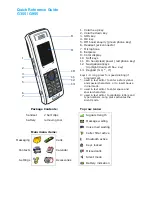
N
ORTEL
TPS 3D S
ENSOR
AND
D
EFENSE
C
ENTER
I
NSTALLATION
G
UIDE
R
ELEASE
4.7.0
PAGE
8
Chapter 1: Before you begin
Typical 3D Sensor deployments
In the following simple network architecture diagram, the network contains three
areas with three different security policies:
•
between the border router and the firewall
•
in the demilitarized zone, or DMZ
•
in the internal, protected network
Figure 1 Typical 3D Sensor deployments
Deploying your 3D Sensors in each of these locations serves different purposes.
•
Placement outside the firewall gives you a clear picture of all the traffic
traversing your network via this gateway. Generally, this location is
appropriate for IPS only. Most enterprises would not need to identify user
identities or employ host and vulnerability detection capabilities in this area.
•
Placement in the DMZ provides you with useful information about attacks on
outward-facing servers. Generally, this location is appropriate for IPS and
RNA, although some enterprises would want to add the user identification
capabilities of RUA here as well.
•
Placement on the internal network monitors inbound traffic for firewall
misconfiguration and detects attacks that originate from hosts on the
Summary of Contents for Softphone 2050
Page 56: ......









































